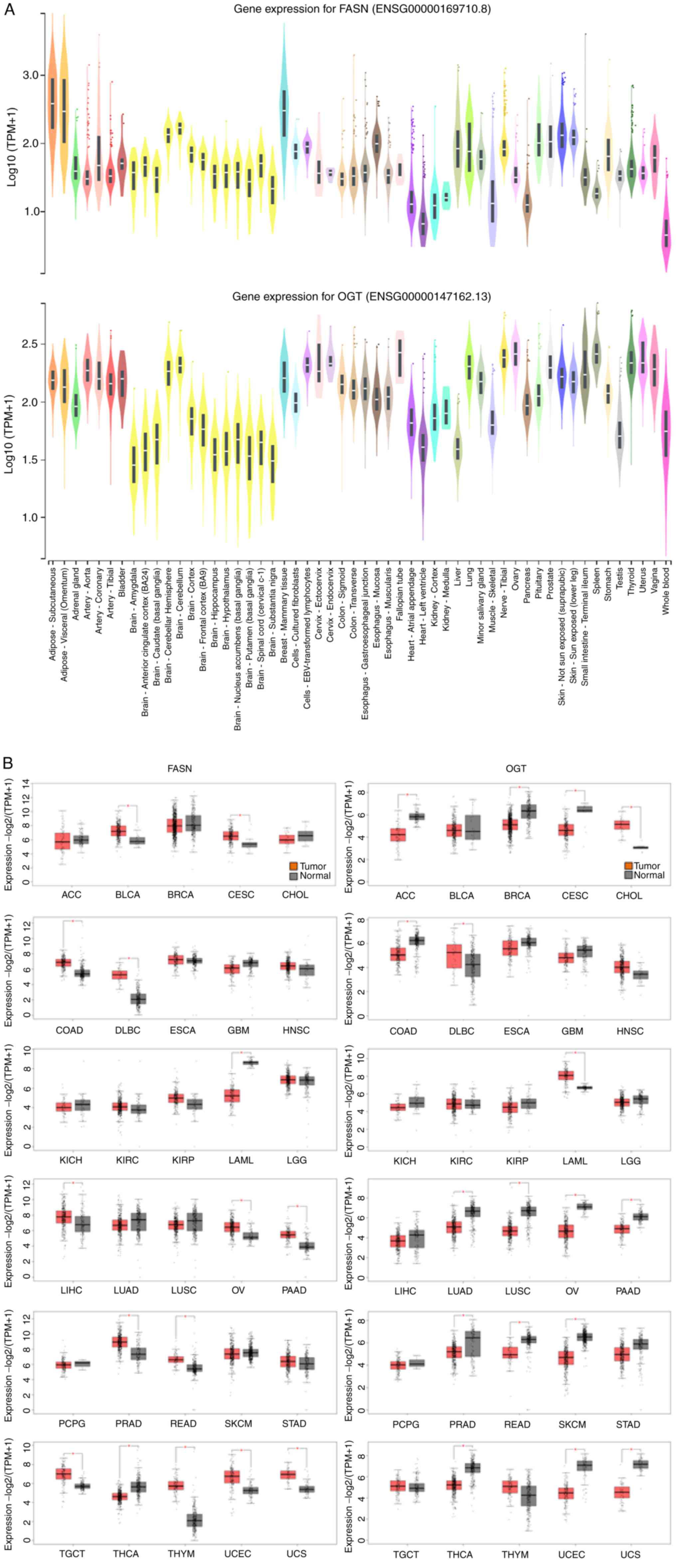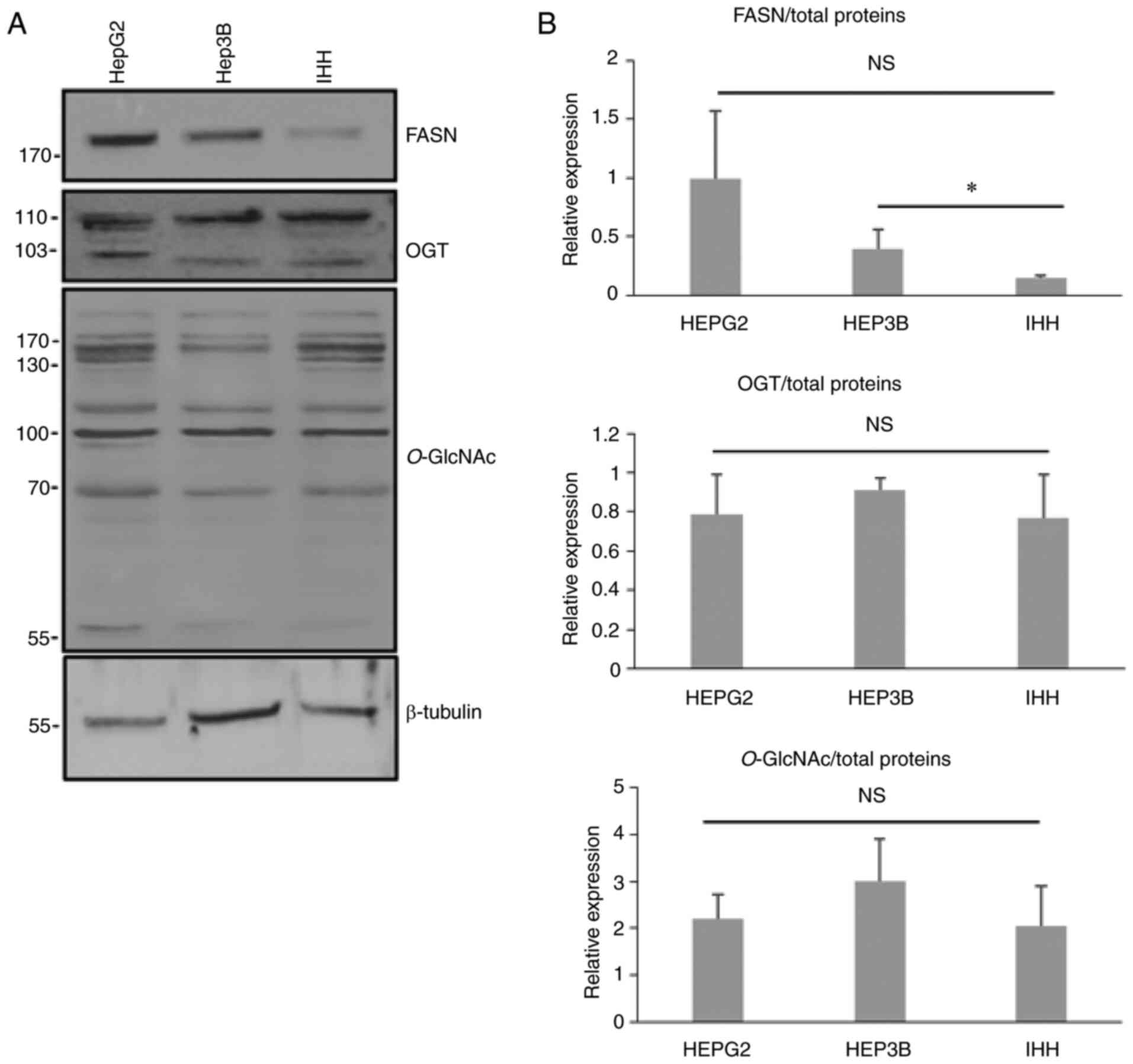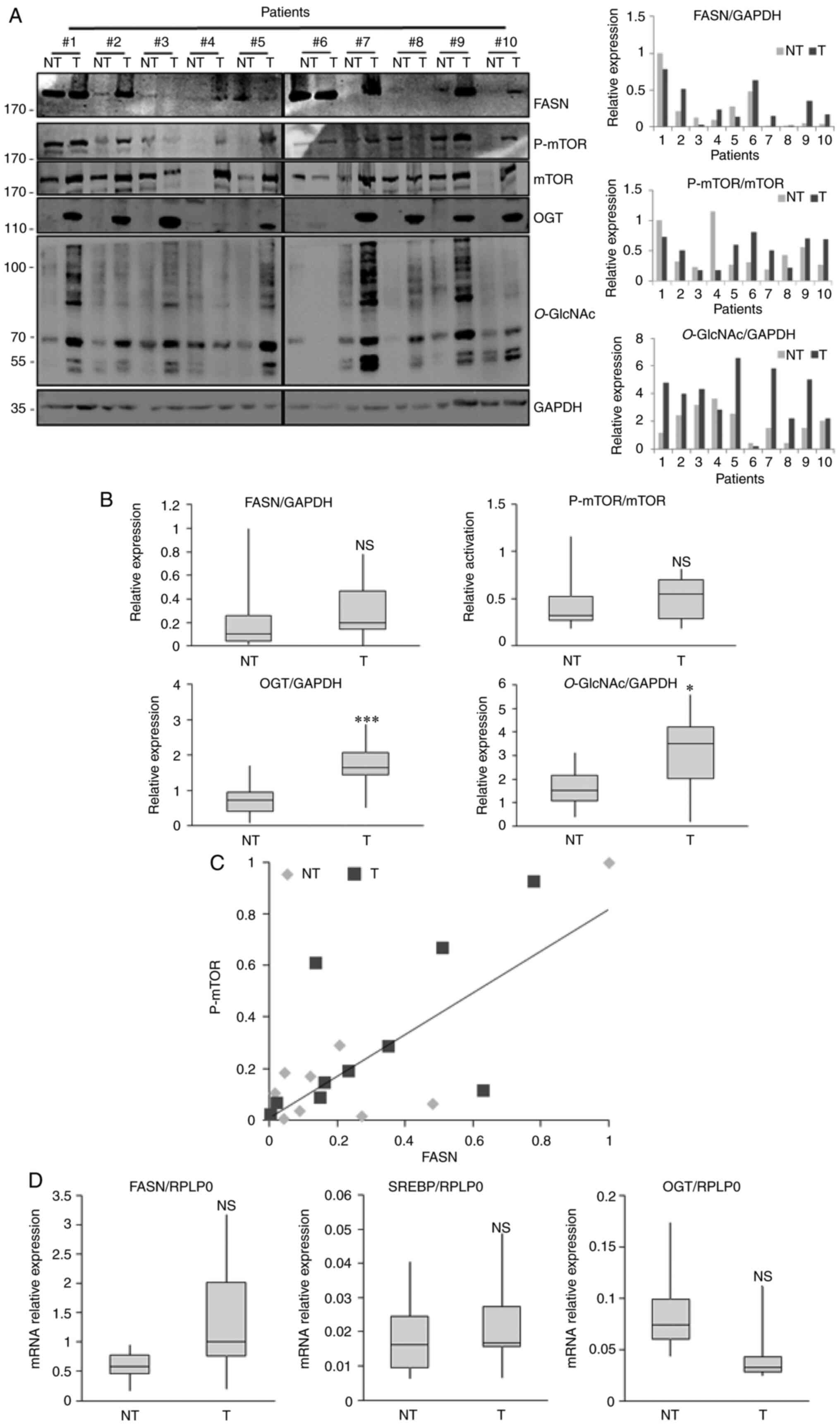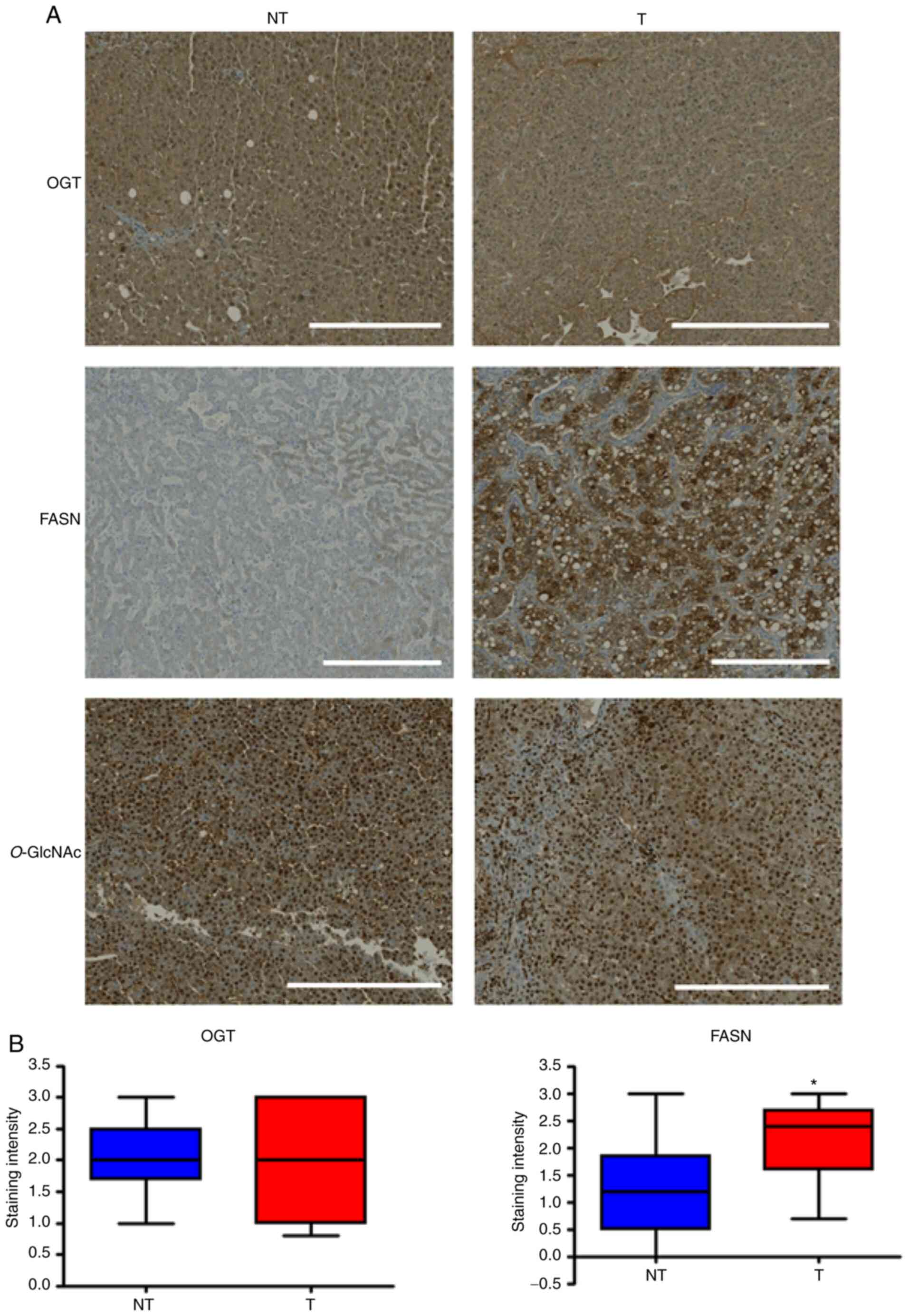Evaluation of the expression of fatty acid synthase and O‑GlcNAc transferase in patients with liver cancer by exploration of transcriptome databases and experimental approaches
- Authors:
- Published online on: February 3, 2022 https://doi.org/10.3892/ol.2022.13225
- Article Number: 105
-
Copyright: © Raab et al. This is an open access article distributed under the terms of Creative Commons Attribution License.
Metrics:
Total
Views: 0 (Spandidos Publications: | PMC Statistics:
)
Total PDF Downloads: 0 (Spandidos Publications: | PMC Statistics:
)
Abstract
Tumor occurrence and development are closely related to metabolism abnormalities. One of the metabolic networks that is dysregulated during carcinogenesis is the fatty acid synthesis pathway, which is mainly controlled by fatty acid synthase (FASN). We previously demonstrated in proliferating HepG2 liver cancer cells that FASN expression depends on the catalytic activity of O‑GlcNAc transferase (OGT) and the activation of the mechanistic/mammalian target of rapamycin (mTOR) pathway. The aim of the present study was to go further in these investigations by analyzing datasets and tissues of patients with liver cancer. To that purpose, transcriptome databases were explored, and reverse transcription‑quantitative PCR, western blotting and immunohistochemistry were used. Database analyses revealed that FASN and OGT gene expression was higher in certain cancer tissues, including liver hepatocellular carcinoma, compared with that in non‑cancerous tissues. At the protein level, FASN expression was higher in the liver cancer‑derived cell lines HepG2 and Hep3B compared with the immortalized human hepatocytes IHH cell line. However, neither the expression of OGT nor of its product O‑GlcNAcylation showed any significant difference among the three hepatic cell lines. Subsequently, the expression of FASN and OGT at the protein and mRNA levels was evaluated in human liver cancer and non‑tumoral tissues from the same patients with different liver lesions. The results from western blotting demonstrated a significant increase in OGT ands O‑GlcNAcylation expression in liver cancer tissues independently of the type of lesion characterizing the non‑tumoral counterpart. As previously reported for HepG2 proliferating cells, the protein level of FASN was positively correlated with the activation of mTOR and, although a rather upward trend, a high variability in its expression was monitored between patients. However, the results from immunohistochemistry showed no particular modification for OGT and O‑GlcNAcylation expression and a significant increase in FASN expression in cancer tissues compared with that in adjacent non‑tumoral tissues. Non‑significant changes were observed for FASN and OGT mRNA levels between tumoral and non‑tumoral samples, with a high variability between patients. Taken together, these results demonstrated that FASN expression was higher in hepatic cancer tissues in comparison with non‑tumoral tissues. Furthermore, OGT expression and activity were shown to vary greatly between cell or cancer type, making any generalization difficult.














